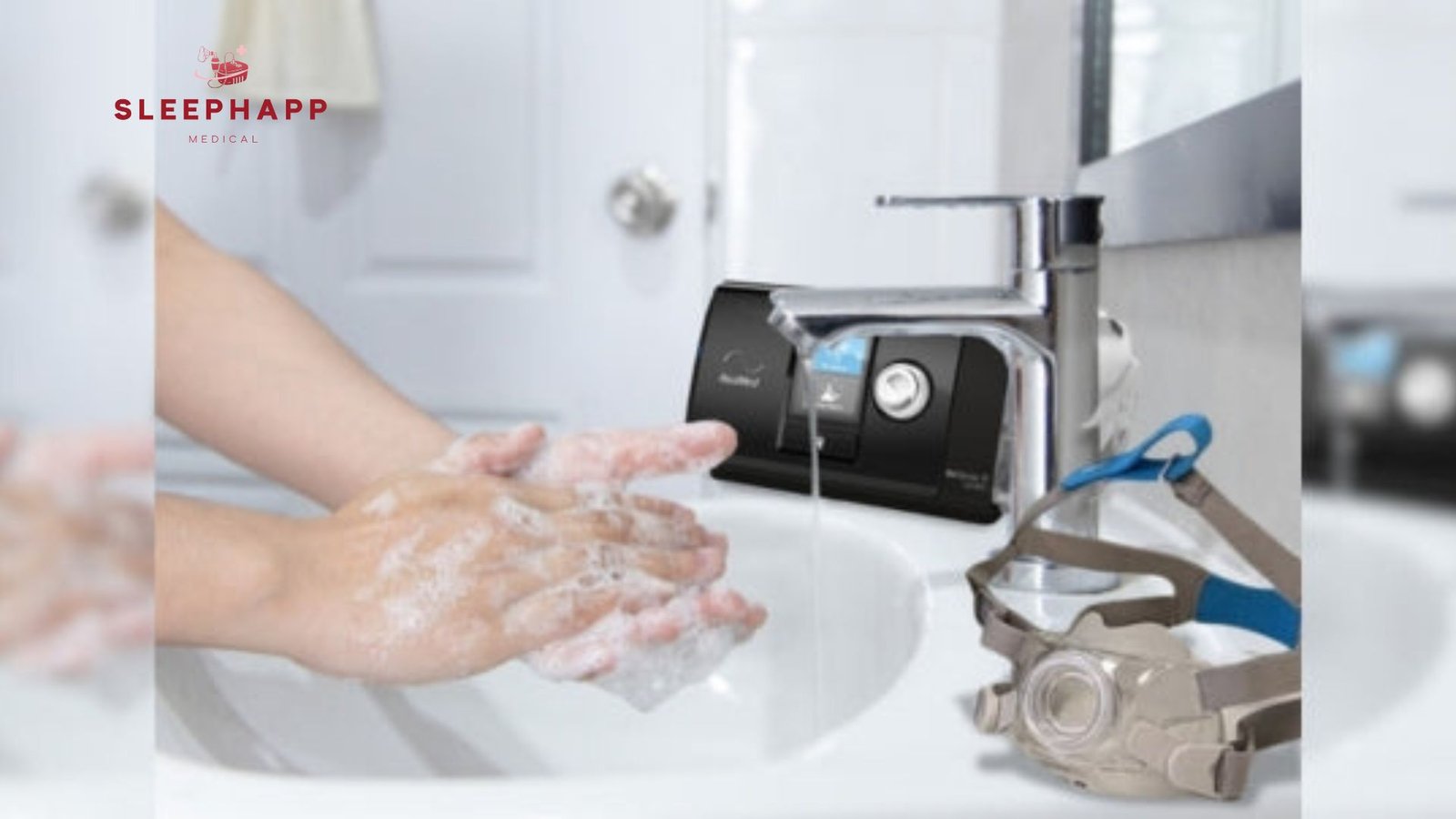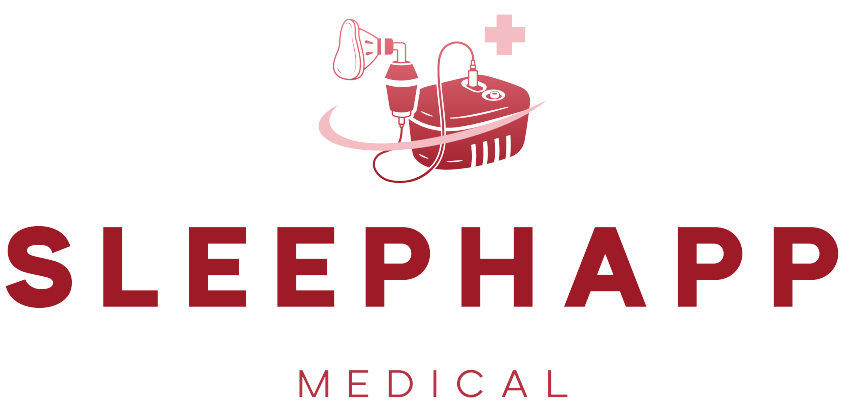What to Look for in a CPAP Machine Cleaner: Tips for CPAP Hygiene
Home » What to Look for in a CPAP Machine Cleaner: Tips for CPAP Hygiene

Table of Contents
CPAP machines help you breathe better while you sleep. They provide a steady flow of air to keep your airway open. This prevents blockages and enables you to sleep peacefully.
Like any medical device, a CPAP machine needs regular cleaning. This keeps it working properly and free from harmful germs or mould.
This guide explains why CPAP hygiene is essential. It also gives tips on choosing the best cleaner for your CPAP machine. Good cleaning keeps you healthy and makes your CPAP last longer.
Key Features to Consider in a CPAP Machine Cleaner
Ease of Use
CPAP machine cleaners should be easy to use. This makes cleaning simple and quick. Look for one with easy buttons and clear instructions. Many good cleaners have automatic cleaning cycles. This means you don’t have to scrub or wash the mask and tubing by hand. This is great for people who want an easy, hands-off way to clean their CPAP equipment. The process should be simple so anyone can use it, even if they are not good with technology. This feature saves time and effort while keeping your machine clean.
Cleaning Technology
The cleaning technology in a CPAP cleaner is critical. Many CPAP cleaners use Ozone technology. Ozone helps sanitize and clean your CPAP machine, mask, and tubing. It kills bacteria, viruses, molds, and germs without harsh chemicals. This makes it suitable for the environment. Another standard method is UV-C light. This light kills germs and bacteria by damaging their DNA. Some cleaners also have a drying cycle. This cycle stops moisture from building up, which helps prevent mold and bacteria. It keeps your CPAP gear clean and ready to use.
Size and Portability
Portability is essential, especially if you travel a lot. Choose a CPAP cleaner that is small, light, and easy to store. A smaller, portable cleaner is perfect for people who must take their cleaning equipment with their CPAP machine when travelling. Some models come with travel bags or cases, which makes them easier to carry. A portable cleaner helps you keep your CPAP clean wherever you go, whether for work or vacation, without holding a heavy device.
Cleaning Duration
The cleaning time is an essential factor when choosing a CPAP machine cleaner. Some cleaners take only about 30 minutes to clean. Others may take longer but give a more thorough clean. If you are short on time, a quick cleaning cycle may be better for you. But a longer cycle is a good choice if you want a deep clean. It’s best if the CPAP cleaner has quick and thorough cleaning options. Choosing the cleaning time based on your schedule is a great feature.
Noise Level
Most CPAP cleaners are quiet, but checking the noise level before buying is good. A noisy cleaner can be distracting, especially if you’re cleaning in a shared space or while others are sleeping. Some models are almost silent, which makes them more convenient and comfortable. A quieter cleaner lets you keep your CPAP clean without disturbing others. If noise is vital, look for cleaners that are made to be silent.
Battery-Powered Option
Some CPAP users like battery-powered cleaners, especially if they travel often or don’t have power outlets nearby. A battery-powered cleaner is handy because it lets you clean your CPAP anywhere. Rechargeable batteries are great because they can be used multiple times, saving money and helping the environment. If you travel a lot, choose a cleaner with a long battery life and quick charging.
Types of CPAP Machine Cleaners
CPAP (Continuous Positive Airway Pressure) machines need regular cleaning. This keeps them working well and safe to use. Here are the main types of cleaners:
Manual CPAP Cleaners
Clean your CPAP machine and parts by hand with soap, water, and tools like brushes or clothes. This method is cheap but takes time. Clean the mask, hose, and water chamber often to avoid bacteria and mold. It gives a deep clean but is not as good at sanitizing as other methods.
UV-C CPAP Cleaners
These cleaners use UV light to kill bacteria, viruses, and mold. They are chemical-free and easy to use. Put the mask and hose inside the UV-C chamber to clean. UV-C cleaners are effective but cost more than manual cleaning. The process may take some time.
Ozone CPAP Cleaners
Ozone cleaners make ozone gas to sanitize CPAP parts. The gas kills bacteria and viruses quickly. These cleaners are fully automatic and need little effort. However, ozone has a strong smell, and incorrect use can be harmful. Follow safety rules to avoid ozone exposure.
Automatic CPAP Cleaners
These cleaners use ozone or UV light for hands-free cleaning. They sanitize all CPAP parts like the mask, hose, and water chamber. Automatic cleaners save time and are great for busy people. They are effective but more expensive. Some use ozone, which may not suit everyone.
Disinfecting Wipes
Pre-moistened wipes clean CPAP masks and parts quickly. They are portable and good for travel or daily cleaning. Wipes are convenient but don’t give a deep clean or fully remove germs over time.
Soaking Solutions
Mix these cleaning agents with water to soak CPAP parts. They clean masks, hoses, and chambers well. After soaking, rinse the parts to remove the solution. Soaking is effective but takes time and effort. It may not sanitize as well as UV-C or ozone cleaners.
CPAP Cleaner with Air Dryer
These cleaners use ozone or UV light and air to clean and dry CPAP parts. The dryer prevents moisture, which causes mold and bacteria. They are great for complete cleaning but are expensive. Drying times depend on the model.
Health and Safety Considerations
Materials Used in CPAP Cleaner
When choosing a CPAP cleaner, make sure it is made from BPA-free and non-toxic materials. This helps avoid harmful chemicals that could hurt your health or the machine. Some cleaners, like ozone cleaners, can damage parts like hoses and masks over time. Check that the cleaner won’t harm these parts. This will help keep the equipment safe and last longer.
Chemical-Free Options
Many CPAP users choose cleaning methods without chemicals. They want to avoid harmful substances. Good alternatives are UV-C light, ozone, or air pressure with water. These clean the CPAP machine without using harsh chemicals. For an eco-friendly choice, vinegar or baking soda can be used. These are safe but less easy to use. They clean the CPAP without chemicals, and it still works well.
Tips for CPAP Hygiene
Daily CPAP Cleaning Routine
Cleaning your CPAP machine every day helps it work well and stay clean. First, wash the mask cushion after each use. Use mild soap and warm water. This will remove oils, dirt, and bacteria. It will also help your skin feel better. Next, wipe the outside of the CPAP machine with a damp cloth. This will get rid of dust and other dirt.
Also, empty and rinse the humidifier water chamber every day. Stale water can grow bacteria and mold. Wash the chamber with warm water and dry it. This keeps the air clean when you use your CPAP.
Weekly CPAP Cleaning Routine
Every week, do a deeper cleaning. Start by taking apart the mask. Clean the headgear, cushion, and frame with warm, soapy water. Rinse them well and let them dry in the air. This keeps the mask clean and helps it last longer.
Clean the humidifier water chamber more carefully. Soak it in warm water mixed with white vinegar. This will kill bacteria and mold. Rinse it well with warm water and let it dry.
CPAP Tubing Maintenance
The tubing needs cleaning, too. It can collect moisture, bacteria, and mold. Wash the tubing with mild soap and warm water. Make sure to clean the inside by swishing it around. After washing, rinse it well with warm water. Hang it to dry completely before using it again. This keeps the tubing dry and stops bacteria from growing.
CPAP Filter Maintenance
The filter helps keep the air clean. Check the filter often. Replace it or clean it as needed. Some filters need replacing every month, while others need cleaning each week. Follow the manufacturer’s instructions to keep the filter in good shape. This helps your CPAP machine work well and gives you clean air.
Conclusion
Keeping your CPAP machine clean is very important. It helps your health and makes the machine last longer. A good CPAP cleaner should be easy, safe, and effective. Cleaning stops bacteria, mold, and allergens from building up. This keeps your machine working well and helps avoid health problems.
Follow the instructions and clean your machine regularly. This makes your CPAP more reliable and improves your sleep. Taking care of your CPAP is simple but important. It helps you treat sleep apnea and live healthier.
